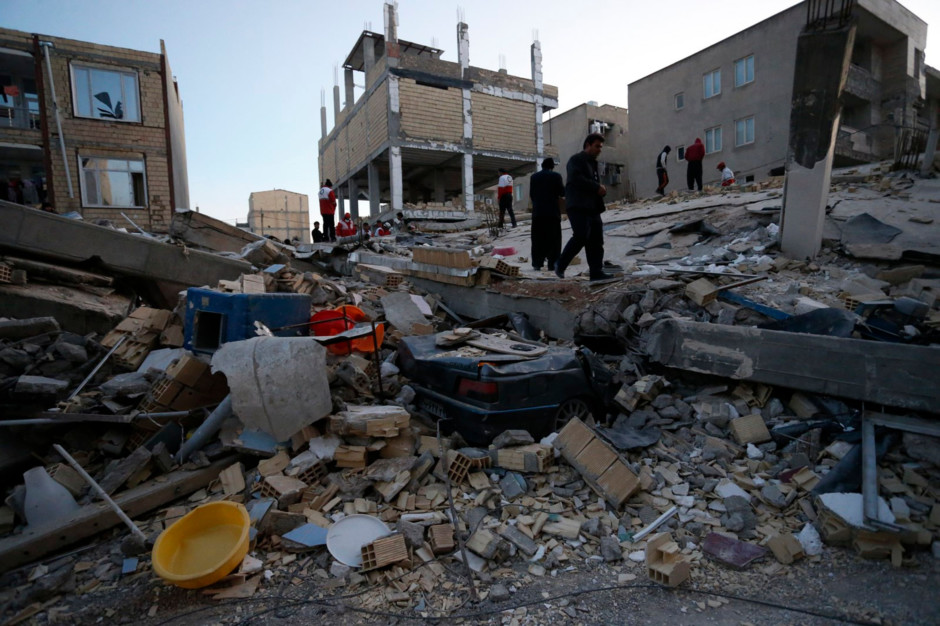The border region between Iran and Iraq has been left devastated after a severe earthquake struck the area late on Sunday.
Almost 350 people have been killed by the 7.3-magnitude earthquake, which struck around 32 kilometers (20 miles) south of Halabja in Iraq. The vast majority of casualties occurred in Iran’s western Kermanshah province. The country’s state-run news agency IRINN reported that 341 people were killed and almost 6,000 injured.
Seven people died in the Kurdish region of northern Iraq, the BBC reported.
The earthquake has left authorities in both countries scrabbling to try and attend to victims, with rescue efforts being hampered by landslides. In the Iranian town of Sarpol-e Zahab, some 10 miles from the border, at least 236 people died and the main hospital was severely damaged, making it difficult to treat survivors, according to the semi-official Iranian Students News Agency.
With thousands of wounded still being treated following the earthquake, the death toll could well rise. But at present, the tremor ranks as the second-deadliest earthquake in 2017.
The worst earthquake so far this year hit Mexico in September, while major tremors also devastated parts of Italy and China in 2017.
Puebla, Mexico—369 killed
The 7.1-magnitude earthquake struck on September 19 around 34 miles south of Puebla, a major Mexican city with a population of almost 2 million. But the impact extended as far as the capital Mexico City—almost 100 miles away—and a total of 369 people were reported killed, including over 200 in the capital. The earthquake was the deadliest to hit Mexico since 1985, when a major quake hit the capital and killed thousands.
Chiapas, Mexico—98 killed
Just weeks before the Puebla earthquake, an even larger quake struck off the country’s southern coast in the Gulf of Tehuantepec. The earthquake had a magnitude of 8.2 and its impact was concentrated in the southern states of Chiapas—where almost 1.5 million people were affected—and Oaxaca, where 78 people were killed out of a total of 98 casualties. The earthquake generated a tsunami with waves as high as 1.75 meters and caused buildings in the capital city to shake.
Central Italy—Around 30 killed
A series of four strong earthquakes—all of which measured 5.2-magnitude or above—struck central Italy on January 18, causing tremors that were felt in the capital Rome, where schools and the metro system were evacuated. The earthquakes are also thought to have been responsible for triggering an avalanche that hit the Rigopiano Hotel on the Gran Sasso mountain in Italy’s Abruzzo region. The avalanche killed 29 people at the hotel. At least one other man was also killed in the Abruzzo region as a result of the earthquakes, the BBC reported.
Southwest China—25 people killed
A 7.0-magnitude earthquake struck Zhangzha Town in China’s southwest Sichuan province on August 8, sending tremors through the mountainous region and causing a complete power failure in Jiuzhaigou County, where the town is located. The quake killed at least 25 people, while more than 500 were injured, according to Chinese authorities.


